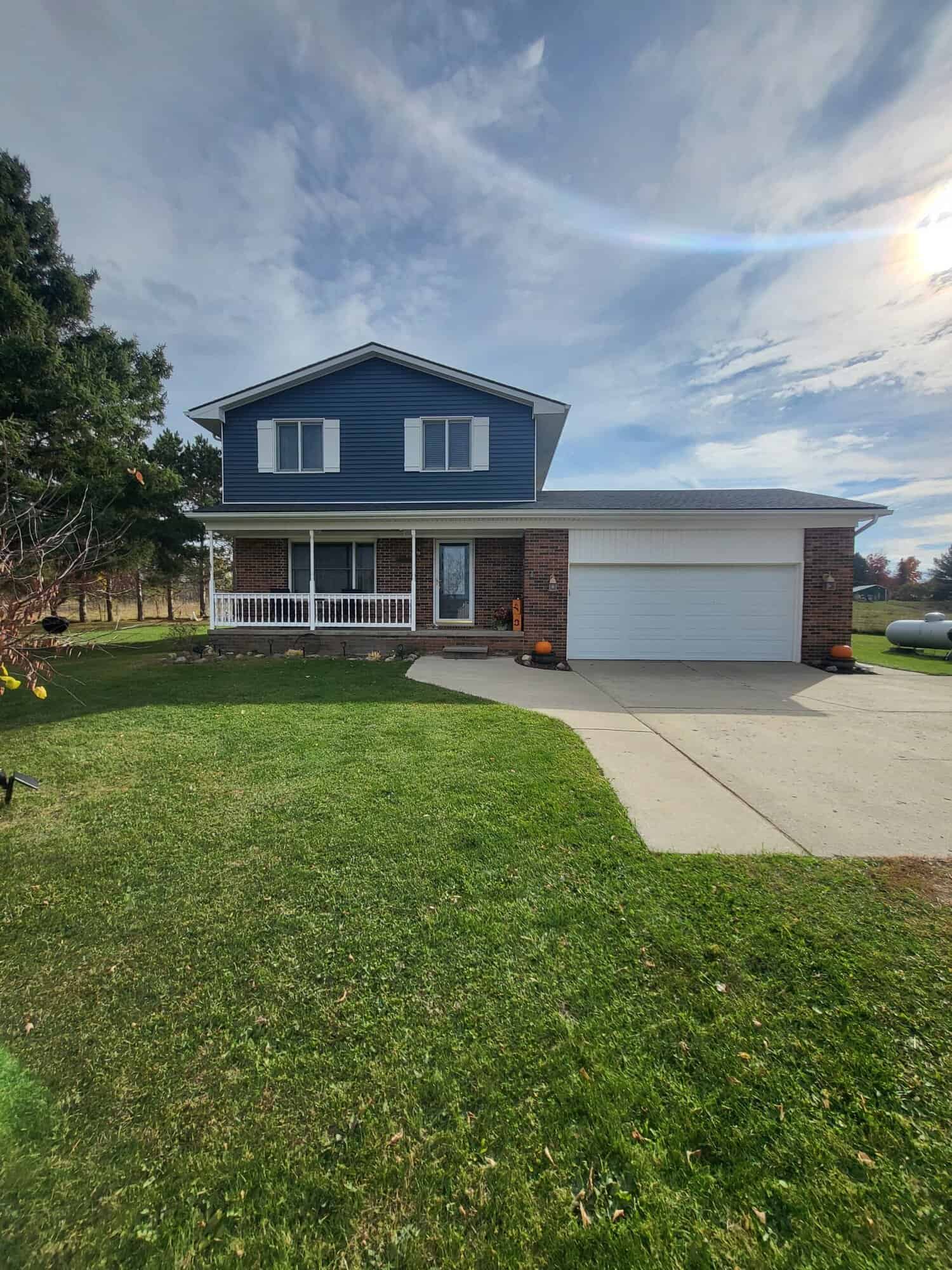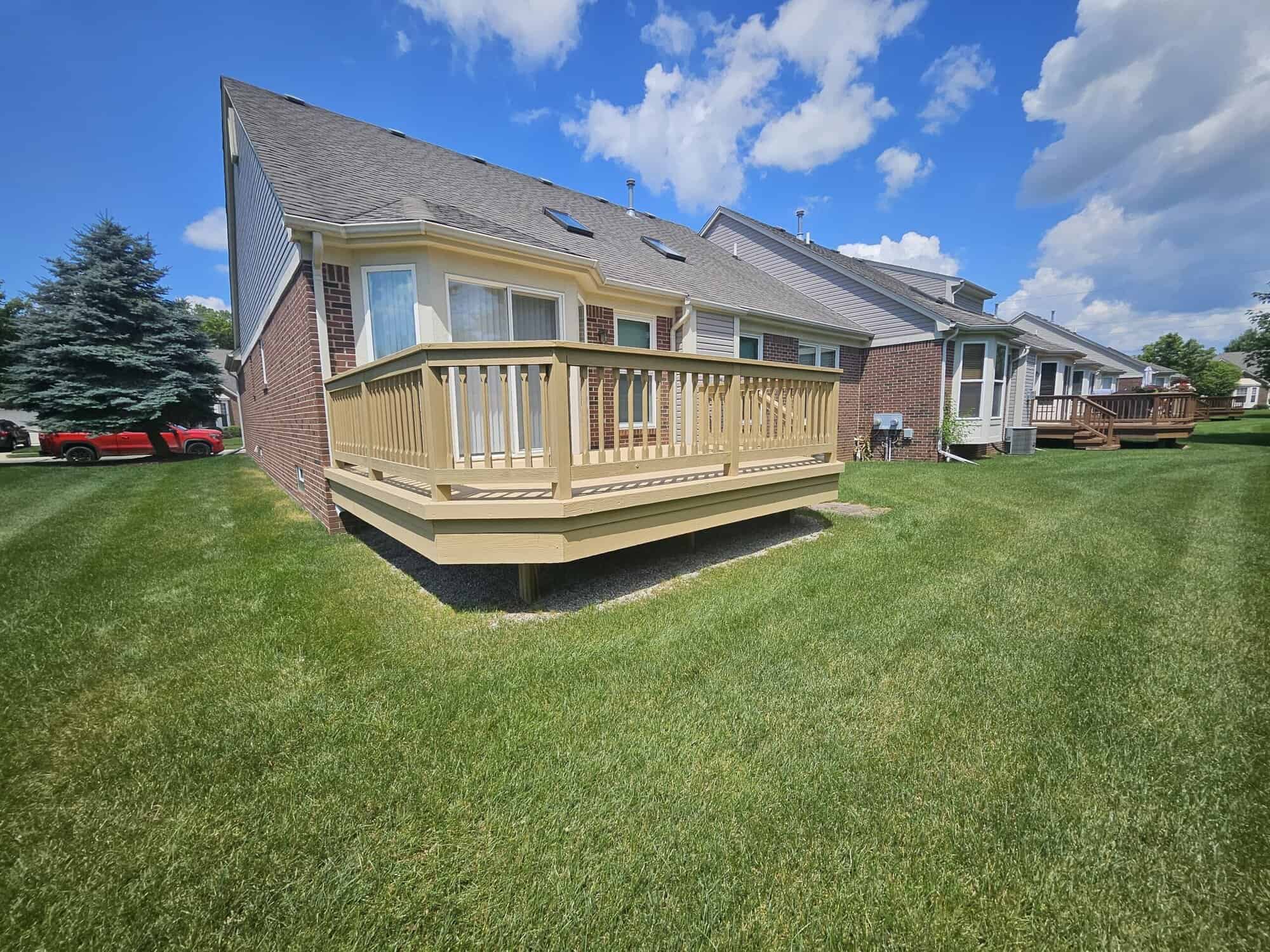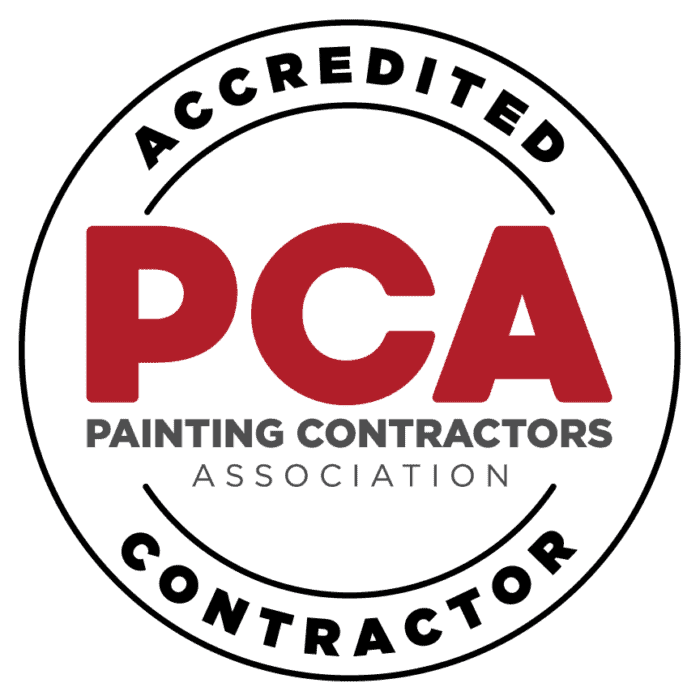Most homeowners assume that exterior painting automatically costs more than interior work. It’s easy to think that way—after all, outdoor jobs involve ladders, scaffolding, weather conditions, and large surface areas. But the truth about painting cost is far more nuanced.
In reality, an intricate interior repaint with designer finishes, multiple rooms, or cabinet refinishing can outprice a standard exterior project. What really drives the painting cost isn’t where the surface is located—but what it takes to prepare it, what product system is used, and how complex the application is.
At Trio Painting, we help homeowners in Bloomfield Hills, MI understand what truly determines painting cost—so they can budget smarter and get lasting results without overpaying.
Key takeaways:
-
Exterior painting isn’t always the priciest; surface prep, finish type, and condition drive total cost.
-
High-end interior finishes and trim detailing can exceed exterior pricing per square foot.
-
Paint formulation, not project location, is the top cost factor.
-
Proper prep and product selection reduce lifetime painting costs.
-
Transparent, itemized quotes help avoid surprise expenses later.
Why People Think Exterior Painting Costs More — and When It Doesn’t

It’s understandable why people assume exteriors are costlier. You see the ladders, power washers, and large walls. But in many homes, interior projects demand more hours and higher-end materials—especially when fine finishes or multiple colors are involved.
For example, a 1,500-square-foot home exterior may cost less than repainting an entire interior that includes vaulted ceilings, custom trim, and cabinetry. The difference lies in labor intensity and coating quality.
Average Cost Comparison (Per 1,000 Sq. Ft.)
| Project Type | Typical Range | Paint System | Labor Hours | Lifespan (Years) |
|---|---|---|---|---|
| Standard Exterior Repaint | $5,000–$8,000 | 100% Acrylic Latex | 40–60 hrs | 8–12 |
| Premium Interior (Multiple Rooms + Trim) | $6,000–$9,500 | Acrylic Enamel / Designer Finish | 50–65 hrs | 7–10 |
| Cabinet Refinishing (Add-on) | $3,000–$6,000 | Alkyd or Urethane Hybrid | 25–40 hrs | 10–15 |
As you can see, painting cost can swing either way depending on the project’s details. Trio Painting always evaluates scope and product system—not just whether it’s “inside” or “outside”—to ensure your estimate reflects the real value.
Factor #1: Paint Product Technology and Formulation
The biggest determinant of painting cost is product formulation. Modern paints are engineered differently for performance, not just for indoor or outdoor use.
Exterior paints—like Sherwin-Williams Duration or Benjamin Moore Aura Exterior—contain UV blockers, mildewcides, and flexible resins that expand and contract with temperature changes. These high-performance ingredients make them costlier per gallon (typically $60–$90).
High-end interior paints, on the other hand, may use advanced resins and pigments for ultra-smooth, self-leveling finishes. Products like Fine Paints of Europe Eco or Benjamin Moore Regal Select can reach $80–$120 per gallon, depending on finish and color depth.
At Trio Painting, we don’t choose paint by brand hype—we match each substrate to the right coating technology. That’s how we protect your investment and control painting costs over time.
Factor #2: Surface Complexity and Prep Work
Prep work is the most underestimated part of any painting cost calculation. Whether it’s exterior or interior, surface prep can easily account for 30–50% of total labor time.
Exterior prep involves washing, scraping, sanding, priming bare wood, and sometimes repairing weather damage.
Interior prep often seems lighter—but when you factor in drywall repairs, wallpaper removal, trim sanding, and stain-blocking primers, the hours add up fast.
A living room with crown molding, wainscoting, and window trim can require more detailed labor than an entire stucco exterior wall. Trio Painting’s estimators evaluate every surface’s condition before quoting—so you know what’s included and what isn’t.
Fact Insight: Neglecting prep reduces paint adhesion, leading to early peeling or visible roller marks. Learn how to prevent roller marks before your next paint job.
Factor #3: Sheen, Finish, and Customization
Paint sheen and finish style have a major impact on painting cost. Higher-gloss or decorative finishes require flawless prep and precise application—small mistakes show instantly.
A standard matte wall finish costs less to apply than a semi-gloss or enamel trim finish. But when homeowners request designer effects—like Venetian plaster, metallic sheens, or faux textures—the materials and labor can exceed even high-end exterior projects.
For example:
-
Matte finish: $25–$45 per gallon
-
Semi-gloss enamel: $50–$70 per gallon
-
Faux/metallic systems: $90–$150+ per gallon
Trio Painting uses professional-grade spray systems for cabinetry and trim to achieve smooth, dust-free finishes. This level of craftsmanship adds time—but delivers a finish that looks better and lasts longer, making the higher painting cost worthwhile.
Factor #4: Access, Labor, and Scheduling Variables
While exterior work requires scaffolding and weather considerations, interior jobs often bring their own challenges—especially in occupied homes.
Protecting furniture, covering floors, and scheduling work around family routines can extend labor time. Multi-color interiors add complexity, as each color change means more cutting-in, taping, and drying stages.
Exteriors, by contrast, allow continuous application with larger tools and fewer interruptions. So even if an exterior job looks bigger, it can sometimes cost less per hour.
Trio Painting plans each project with precision—staging labor, sequencing rooms, and optimizing drying time—to manage painting costs efficiently while maintaining top-tier quality.
Factor #5: Paint Coverage, Coats, and Product Thickness
Paint coverage isn’t as simple as one gallon per 400 square feet. Different paints have varying pigment concentrations and solids content that affect how much you need.
-
Exterior paints are thicker, formulated for protection, and generally cover rougher textures with fewer edges.
-
Interior paints vary by finish type—ceilings, walls, and trim often use three different sheens, increasing total material needs.
Example: A five-room interior with ceilings, walls, and trim may use more total gallons than an entire exterior wall surface.
At Trio Painting, we specify the correct number of coats and primers for each surface type. This ensures color consistency, even coverage, and reduced painting costs from wasted material.
When Interior Jobs Can Outprice Exterior Ones
Certain interior projects naturally exceed exterior painting costs:
-
Full interior repaints with high-end designer colors
-
Cabinet refinishing or enamel trim upgrades
-
Decorative or faux finishes
-
Historic home restorations
For example, repainting a 2,000 sq. ft. home interior with intricate moldings and color transitions could cost $8,500 or more—while a simple two-story exterior might come in at $6,000.
Premium interior coatings such as Sherwin-Williams Emerald, Benjamin Moore Scuff-X, or Fine Paints of Europe Eco can cost well over $100 per gallon—but provide superior washability and longevity, offsetting future repainting expenses.
Trio Painting helps clients balance performance with cost—selecting the right coating systems for every surface, so your painting cost reflects value, not excess.
How to Accurately Compare Interior and Exterior Quotes
Comparing quotes is tricky when details are vague. Many homeowners only look at the total price—without considering inclusions like primer, brand, or warranty. That’s where misunderstandings about painting cost begin.
A professional quote should include:
-
Paint product, brand, and finish type
-
Number of coats and primer specification
-
Surface prep details
-
Warranty or service guarantee
-
Cleanup and protection measures
Example Cost Breakdown – Interior vs. Exterior
| Cost Component | Interior (Multi-Room) | Exterior (Standard Home) |
|---|---|---|
| Surface Prep | 30% | 35% |
| Paint & Materials | 25% | 30% |
| Labor | 40% | 30% |
| Cleanup / Site Protection | 5% | 5% |
| Total Project Range | $6,000–$9,000 | $5,000–$8,000 |
At Trio Painting, every estimate is detailed and transparent—so you see exactly where your investment goes. This clarity helps clients in [Bloomfield Hills, MI] make confident decisions without hidden painting costs.
Common Questions Homeowners Ask
Q1: Why do some interior paint jobs cost more than exterior?
Because interiors often involve more detail, more finishes, and higher-end products. Complex trim or cabinetry takes time—and precision adds value.
Q2: Can I use the same paint indoors and outdoors to save money?
No. Exterior paints emit higher VOCs and contain additives unsuited for indoor air. Interior paints lack UV protection and moisture resistance. Mixing the two can cause early failure and double your painting cost later.
Q3: What’s the best way to reduce painting costs?
Combine interior and exterior projects under one contract, maintain your paintwork regularly, and avoid bargain products that need early recoating.
Q4: How often should I repaint?
Interiors every 5–8 years; exteriors every 7–10 years depending on exposure, substrate, and product quality.
Q5: How can I tell if my quote is inflated?
Ask for line items. A trustworthy contractor like Trio Painting provides details on coatings, coats, prep, and warranties—so you can judge real painting cost value.
Long-Term Value: It’s About Longevity, Not Just Price
The real value of painting lies in how long it lasts. A low-cost job may look fine for two years—but start peeling by year four. A premium paint system, correctly applied, could last a decade or more.
Over 15 years, a cheap $3,000 job repeated every 5 years costs $9,000.
A $6,000 quality system lasting 10–12 years totals $12,000 over 20 years—with less hassle and higher property value.
Trio Painting prioritizes long-term results, using high-solids coatings, moisture testing, and proper surface prep to protect your home’s exterior and interior. That’s how smart homeowners control lifetime painting costs.
The Smart Way to Judge Painting Costs
The highest painting cost doesn’t always belong to exterior work. True cost depends on scope, prep, and coating technology—not just whether the surface faces the elements.
When you invest in professional craftsmanship, detailed prep, and the right products, you gain a longer-lasting finish and avoid hidden repair expenses later.
Contact Trio Painting today for a transparent, detailed estimate for exterior house painting in Bloomfield Hills, MI. We’ll show you exactly what drives your project’s painting cost, and how to make every dollar deliver maximum durability and curb appeal.






